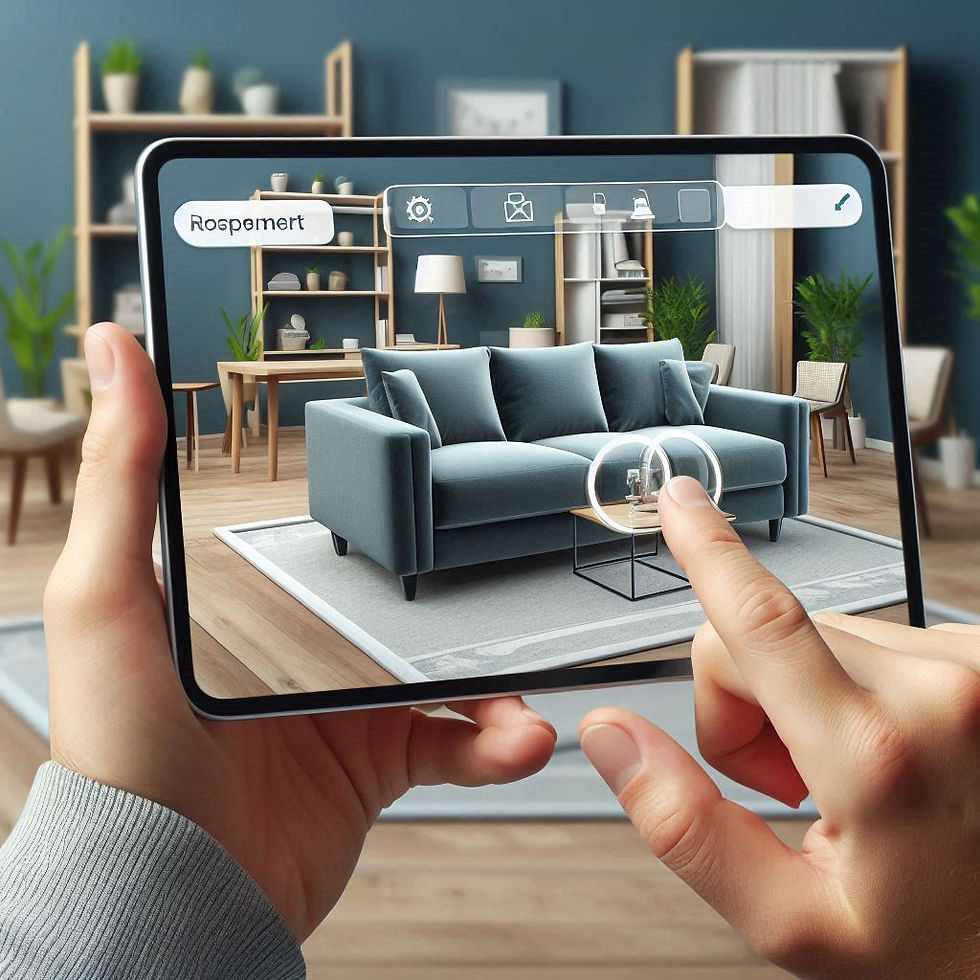
As the home furnishings industry continues to navigate economic uncertainty, from inflation to shifting consumer priorities, ecommerce has emerged as a key driver of resilience and growth. Staying ahead requires businesses to adapt to new shopping behaviors and harness innovative strategies to attract and retain customers.
To shed light on emerging opportunities, BigCommerce recently collaborated with Retail Dive for a panel discussion titled Driving Ecommerce Growth for Home, Garden, and Furniture Brands: 4 Trends for 2024. Featuring industry leaders like Michael McBride of Atelier Commerce, Ed Curry of DUXIANA North America, and Fiona Norton from BigCommerce, the event unveiled actionable insights for modernizing the ecommerce experience. Here’s a closer look at the top four trends discussed.

1. Bringing the Showroom Online
The tactile nature of home furnishings often makes shoppers hesitant to purchase big-ticket items online. Comfort, texture, and spatial fit are critical considerations that an ecommerce site must address to build trust and drive conversions.
To replicate the in-store experience, brands are adopting technologies like augmented reality (AR), virtual reality (VR), and interactive features. These tools help customers visualize products in their homes or engage with them as they would in a physical showroom.
DUXIANA, a luxury mattress brand, exemplifies this approach. Partnering with Atelier Commerce and Codal, they created a headless ecommerce platform that mimics the showroom experience. Features like seamless product swiping, live chat, and virtual appointments enable customers to explore and make decisions with confidence.
Pro Tips for Success:
Use AR and VR to allow customers to preview furniture in their living spaces.
Offer personalized consultations to guide customers through their choices.
Provide interactive product guides that mimic in-store assistance.

2. Enhancing B2B Ecommerce
The rise of digital-first interactions has transformed B2B commerce, making it imperative for home furnishings brands to deliver a consumer-grade experience for trade buyers. As 80% of B2B transactions are expected to be online by 2025, now is the time to upgrade your digital infrastructure.
According to Fiona Norton, brands that succeed in B2B ecommerce prioritize intuitive, tailored experiences. Tools such as custom pricing lists, multi-storefront support, and integrated ERP systems are crucial for managing complex trade transactions.
Actionable Ideas:
Implement customer segmentation for trade buyers with tiered pricing and catalogs.
Leverage multi-currency and multi-language options to attract global clients.
Partner with developers to create a seamless, scalable platform for B2B operations.

3. Crafting a Seamless Omnichannel Presence
Modern shoppers expect a seamless experience across all touchpoints—whether browsing on social media, shopping online, or visiting a store. For home furnishings brands, creating an omnichannel strategy ensures consistent engagement and customer satisfaction.
Buy Online, Pick Up In Store (BOPIS) is gaining popularity, especially for large or heavy items, as it allows customers to save on shipping costs while experiencing the convenience of ecommerce. Social commerce, supported by platforms like Instagram and Pinterest, further complements this strategy by driving product discovery and engagement.
Must-Have Features for Omnichannel Success:
Integrate inventory and order management tools like Feedonomics to unify your sales channels.
Offer flexible fulfillment options, such as curbside pickup or same-day delivery.
Maintain an active and engaging presence on key social media platforms.

4. Easing Purchase Decisions with Flexibility and Reviews
In an era of economic caution, providing customers with flexible payment options and social proof can significantly influence purchase decisions.
Services like Buy Now, Pay Later (BNPL) offer customers financial flexibility, particularly for high-ticket items like sofas or dining sets. Meanwhile, user-generated content (UGC), including reviews and real-life photos, helps build trust by showcasing how products look and function in actual homes.
According to Norton, photos of styled products in customers’ homes resonate deeply with potential buyers, making them feel more confident about their purchases.
How to Build Trust:
Partner with BNPL providers to make purchases more accessible.
Actively encourage customers to leave reviews and share their experiences.
Highlight UGC across your website and social media to inspire and reassure shoppers.

Final Takeaway
The home furnishings industry is at a pivotal moment, with digital transformation offering a wealth of opportunities to enhance the customer journey. By embracing showroom-style ecommerce, modern B2B tools, omnichannel strategies, and flexible purchasing options, brands can position themselves for sustained growth in 2024 and beyond.
Marvin XR offers end to end 3D services for the online furniture brand founders who are ready to boost their business quickly. We take the ownership to provide the following:
Ultra high quality 3D modeling based on 4-6 images
Web based AR campaigns creations in bulk with no-code platform
3D Rendering (HDR photoshoot using 3D models)
3D Configurators for adding customizations to online user experience
3D Videos (HDR videos based on 3D models)
Marvin Integration Tool for easy 3D integration to any platform
Track KPIs, Online 3D editors, quick update of product catalogues and many.
Contact us today at support@marvinxr.com for a free consultancy to evaluate your 3D business vision for a better and successful future.

Comments